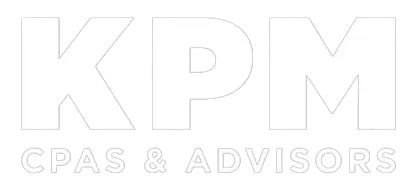When employers’ leadership teams gather to discuss sponsoring a retirement plan, “How about a 401(k)?” is usually among the first questions asked. But it’s essential to consider other options as well. In fact, some alternatives may better suit small to midsize organizations that aren’t equipped to handle the heavy administrative burden of a 401(k).
One example is a Simplified Employee Pension (SEP) plan. This plan type is designed to enable employers to help employees accumulate funds for retirement with minimal paperwork for the employer-sponsors. Of course, SEP plans still have rules all their own that you’ll need to understand before jumping in.
Contribution Requirement
In the eyes of the IRS, SEP plans are a type of qualified retirement plan. That means they offer tax advantages to both employer-sponsors and participants.
Essentially, you set up a SEP plan through a bank or other financial institution. This typically involves completing IRS Form 5305-SEP, “Simplified Employee Pension — Individual Retirement Accounts Contribution Agreement,” or using an IRS-approved prototype plan. In doing so, you create IRAs (called SEP-IRAs) for each participant.
And here lies an important point: Unlike traditional 401(k) accounts, SEP-IRAs set up for employees don’t allow them to contribute. Only you, the employer-sponsor, can contribute. This feature gives you control over the timing and amounts of contributions.
More specifically, you get to decide annually whether and how much to contribute to participants’ accounts. In 2025, you may contribute up to 25% of each eligible employee’s compensation with a maximum of $70,000 (an amount annually indexed for inflation). You need to make contributions at the same percentage of pay for all qualifying employees — including yourself if you’re self-employed.
Other Key Rules
There are other key rules to keep in mind. For example, IRS guidelines determine who can be a plan participant. Employees are generally eligible if they:
- Are at least 21 years old
- Have worked for your organization in three of the past five years
- Have earned at least $750 in 2025
You may choose less stringent eligibility requirements, but you can’t impose more restrictive ones.
The good news is that, unlike many other qualified plans, SEP plans don’t require annual IRS filings for employers. However, if you choose to make contributions, you must do so by your organization’s tax-filing deadline (including extensions) for them to count for the previous year.
Please note that your contributions are immediately 100% vested, and participants own their SEP-IRAs outright. That means once you transfer the funds, those dollars belong to participants — even if they leave their jobs.
Potential Advantages & Risks
As mentioned, the biggest advantage of SEP plans over many other qualified plans is a much lighter administrative burden. Setup is relatively easy, the rules are straightforward, there are no annual tests or filings required, and you can opt out of making contributions in any given year.
When you do choose to make contributions, they’re tax deductible, which reduces your taxable income. What’s more, the plan itself can help you attract quality job candidates and retain good employees.
Naturally, there are risks to consider. As mentioned, you must contribute the same percentage for every eligible employee, which may include yourself. That means if you want to set aside substantial sums for your own retirement, you’ll have to do the same for participants.
The contribution requirement can also get expensive as an organization grows and more participants join the plan. That’s why SEP plans are usually best suited to smaller employers. In addition, because employees are immediately vested, you can’t set up a vesting schedule to use as a retention tool.
Low-Maintenance Vehicle
In summary, a SEP plan may be a strong fringe benefit for your organization if you’re looking to sponsor a low-maintenance vehicle to help you and your staff save for retirement. However, you must verify that the plan’s design aligns with your cash flow and strategic goals before implementing it. We can help you better understand the rules, costs, and tax impact as they apply to your organization. Contact us.

